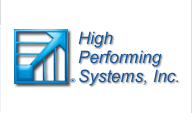Debra Cannarella
VP of Operations, High Performing Systems, Inc.
People are different, and those differences can lead to tension in a professional setting. On the job, people are brought together based on specialties and technical skills, rather than on how they will get along. Ironically, however, it’s often the interpersonal interactions between co-workers that create either an environment of trust and collaboration or challenge and discord.
When it comes to interpersonal behavior labels, some people might get named as loners or non-team players. Others might be described as control freaks, always trying to take charge, or as sharing too much personal information and making others uncomfortable. More recently, people might get labeled with any number of negative tags related to their personal views and experiences during the COVID-19 pandemic. Without question, interpersonal behaviors—and our tolerance for ones different from our own—are development areas in which a professional coach or trainer can provide essential guidance.
“If I could use only one assessment when working with a team in a teambuilding session, it would be FIRO® Element B™. It simply is the best instrument available for understanding and improving the interpersonal issues facing a team, especially a team in conflict,” said Henry L. (Dick) Thompson, Ph.D., HPS Founder and CEO. The Element B is a powerful assessment tool that can help co-workers do precisely that: understand differences in team members’ behavior and form the basis for improved teamwork and effective performance.
What is it that makes the Element B so informative? First, it provides feedback on interpersonal behavior in three dimensions: Inclusion, Control and Openness. These behaviors are the basic building blocks of how people interact when working together.
Inclusion is about how much interaction you like to have. Some people tend to work collaboratively with frequent meetings, while others work independently. If one person prefers less interaction than most of the other team members, it’s easy to see how the label of “lone wolf” might be applied to that person.
Control is about taking charge and leading directly. Some people are quick to take the lead and direct the work of the group. Other people hold back and don’t take control unless they have to.
Openness is about sharing personal feelings and thoughts with others. Some people tend to be very open and come across as warm and friendly, and comfortable to get to know. Others are more reserved and tend not to share very much personal information with people.
Once team members understand the basic model, they can begin to see the insights that the Element B can provide. If one person wants high Inclusion levels, but most team members do not include her in meetings, she might feel left out. If another does not like to be controlled, but his manager is high on the dimension of controlling others, the team member could feel micro-managed. If a team is reasonably high overall in Openness and encourages a lot of sharing, but one person is much lower, he may feel pressured to share more than he wants.
When co-workers understand each other’s interpersonal dynamics as a group, they can begin to talk about team issues constructively. It’s not personal anymore. Instead, they can focus on different behavioral styles and wants. It makes it okay to be different. Co-workers can feel heard and valued for their uniqueness, which leads to a healthier work environment and better overall organizational success.
For a printable PDF of this article, click here.
_____________________________________
Debra Cannarella is the VP of Operations at High Performing Systems, Inc. (HPS), a consulting company that provides assessments, consulting and training solutions to help organizations excel. HPS conducts certification training on the EQ-i 2.0 assessment and provides individual, leader and executive coaching to clients. Contact Debra by email at debra@hpsys.com.
High Performing Systems is an award-winning world leader in EQ-i 2.0® certification (since 2005), EI training and implementation, leader coaching and success profiles. Call 706-769-5836 to talk with an experienced EI practitioner about your organization's specific needs. |
